Solar Astronomy
Observing, imaging and studying the Sun
Contents
Observing the Sun: there are many ways to enjoy solar observation, from visual observation to high resolution imaging, using commercial telescopes or home-made dedicated solar telescopes, from observation of the photosphere in “white light” to observation of the chromosphere with specialized narrow-band filters, including radio observation with a TV satellite dish.
The goal of this book is to provide a comprehensive guide to solar observation techniques, including examples and advice, for the beginner as well as the seasoned amateur.
This book could not be the work of only one. The diversity of contributors is a testimony of the various possible fields in solar observation. Each contributor, with his own style and favorite topics, shares here with us his experience and passion.
Contents:
The various themes are presented in three main parts.
1st part “Discovering the “Sun”
This part offers, as an appetizer, a general introduction to the Sun:
Chapter 1: overview of the long history of solar observation.
Chapter 2: brief description of the main phenomena observable on our star.
The goal of this part is not to cover extensively these two themes but to raise the curiosity of the reader, and encourage him/her to refer to the works given in the references for further information.
2nd part “Observation, equipment and techniques”
Needless to say, this part is the main course. It gives a presentation of the phenomena observable by the amateur and an in-depth discussion of the long chain of elements involved in solar observation:
Chapter 3: essential warnings on eye safety.
Chapter 4: observing conditions and atmospheric turbulence.
Chapter 5: different types of telescope designs with their pros and cons for solar observation.
Chapter 6: observation of the visible “surface” of the Sun, i.e. the photosphere, with the required instrumentation and associated filters.
Chapter 7: observation of the chromosphere, with the required instrumentation and associated filters.
Chapter 8: the coronagraph.
Chapter 9: examples of home-made instruments specialized in solar observation, actually used by the contributors, from the simplest to the most sophisticated.
Armed with this background, we can get into solar observing, whether visual or by imaging with a DSLR camera or a video camera:
Chapter 10: drawing.
Chapter 11: image acquisition with a camera or a DSLR (sensor characteristics, setting of the cameras and DSLR).
Chapter 12: image processing. This last step is one of the most fascinating: how to enhance, without falling into excess, every detail contained in the image.
Two additional chapters complement this 2nd part, by developing the two following themes:
Chapter 13: radio astronomy, with a presentation of radio telescopes, the solar physics at work at radio wavelengths and the description of a radio telescope an amateur can build, with examples of observations.
Chapter 14: observing and imaging solar eclipses.
3rd part “Observing projects”
Obtaining a beautiful image brings an undeniable satisfaction, which can prompt the amateur to go one step further and embark in an observing program. This is the purpose of this 3rd part.
Chapter 15: presentation of various observing programs that can be undertaken by the amateur for monitoring solar activity, from its simplest form to more advanced studies directly derived from professional work.
Chapter 16: the dynamic solar activity can also be followed even without an instrument, thanks to the large resources available on the Internet.
Finally, the reader will find at the end of the book additional documentation including a list of references, the main data about our Sun, a list of filter suppliers, a list of the largest solar professional telescopes around the world, a glossary and the indispensable index helping to find one’s way through the book.
Even if there is a progression in the sequence of chapters, they are largely independent from each other. Indications are given when needed to navigate thru the book.
Beginners will find a guide to their first observations in Part I, and in the introductory paragraphs of chapters 6 and 7 related to the observation of the photosphere and the chromosphere. As they get more experienced, they will benefit from the more advanced parts. As for the advanced amateurs, no doubt they will pick up here and there on information or an idea that will help them to make further progress.
Part II is largely dedicated to the techniques of observation. The main objective of this part is to bring an understanding of how the equipment works and how to make the best use of it. Even if there are many references to commercial products, this part is not intended to be a buying guide on solar scopes or solar filters. For this, the reader will refer to reviews published in his/her favorite astronomical magazine, to forum discussions, or to actual in-field testing and comparison at astronomical meetings.
Finally, the authors are not professional astronomers. They have tried their best to present up-to-date and reliable information, checked as much as possible from original sources. This is one of the reasons why references to the original professional papers are given in some chapters. The authors hope this information will prompt readers to pursue their exploration and understanding of the Sun. The authors beg professional astronomers to forgive them whenever they oversimplified the description of the solar physics and the observed phenomena. If mistakes remain in the text, they are the sole responsibility of the authors.

1. History of solar observation
1.1 Pre-telescopic observations
1.2 First telescopic observations
1.3 Observation in the 19th century
1.4 The 20th century
1.5 The quest for high resolution: 130 years of solar imaging
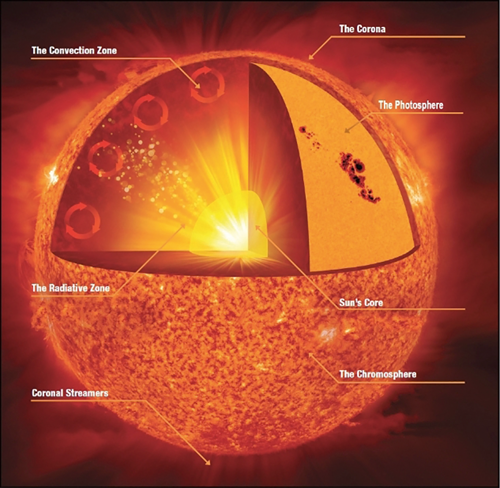
2. Understanding our star
2.1 The quiet Sun
2.1.1 The solar surface (photosphere)
2.1.2 Granulation
2.1.3 Revelations of spectral analysis
2.1.4 Chromosphere
2.1.5 Corona
2.1.6 Towards the interior of the Sun
2.1.7 The energy of the Sun
2.2 The active Sun
2.2.1 Activity cycles
2.2.2 Solar activity: description
2.2.3 Solar activity: some explanations
2.3 The Sun, its life, its work
2.3.1 Life and death of the Sun
2.3.2 The Sun and us
2.3.3 In conclusion
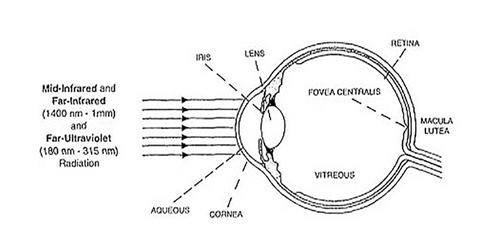
3. Observing the Sun safely
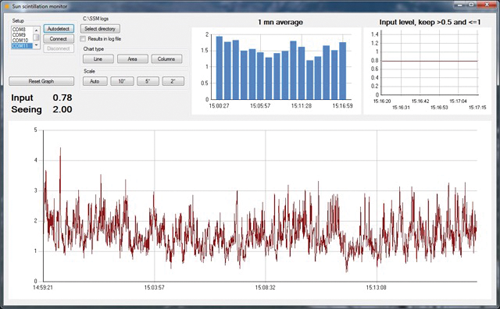
4. Observation conditions
4.1 What is turbulence?
4.1.1 Atmospheric turbulence
4.1.2 The different layers of turbulence
4.1.3 Image quality, seeing and the Fried parameter
4.1.3.1 The effects of air turbulence on star images
4.1.3.2 The effects of air turbulence on solar images
4.2 Which aperture for observation of the Sun?
4.2.1 Which aperture for imaging?
4.2.2 Which aperture for visual observation?
4.3 Local turbulence and instrument turbulence
4.3.1 Local turbulence and the choice of observation site
4.3.2 Turbulence related to telescope shelters
4.4 The variation of turbulence during the day: what is the best time for observation?
4.5 Measuring the seeing in real-time with a SSM
4.5.1 Scintillation of stars, planets and the Sun
4.5.2 The Solar Scintillation Monitor and its use by amateurs
4.5.2.1 Search and comparison of solar observation sites
4.5.2.2 Optimization of a solar observation site
4.5.2.3 Automatic triggering of acquisitions
4.5.2.4 Implementation and limitations of SSM
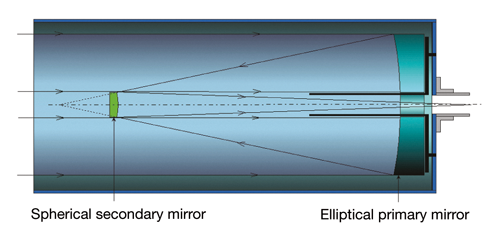
5. Telescopes for solar observation
5.1 Introduction
5.2 The main telescope designs
5.2.1 The refracting telescope
5.2.2 The Newtonian reflector
5.2.3 The Schmidt-Cassegrain telescope
5.2.4 The Dall-Kirkham Telescope
5.2.5 The classical Cassegrain telescope
5.2.6 Maksutov-Cassegrain telescope
5.3 Resolution and aperture
5.4 Quality criteria for high resolution optics
5.4.1 Tolerances for the complete instrument
5.4.2 Surface tolerance for internally mounted filters
5.4.3 Surface tolerance for the 45° secondary mirror of a Newtonian Telescope
5.4.4 Wavelength and geometric precision of a mirror surface
5.4.5 Cumulative error of different optical elements in a telescope
5.5 The effects of obstruction
5.5.1 Diffraction by a central obstruction
5.5.2 Diffraction by spacers of a Fabry-Perot etalon
5.5.3 Sub-pupil diffraction
5.5.4 Diffraction by the secondary mirror spider
5.6 Collimation and star testing
5.6.1 Collimation
5.6.2 Principle of star testing
5.7 Appendix: more on wavefront error
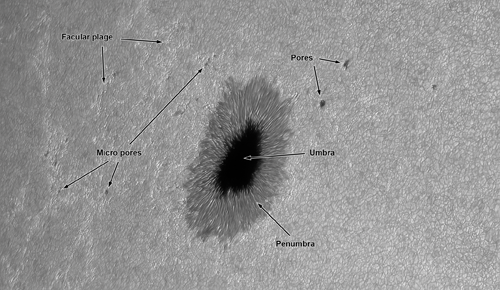
6. Observation of the photosphere
6.1 Introduction
6.2 Which instrument for observing the photosphere?
6.2.1 Observation of the photosphere … it’s simple!
6.2.2 Refractor or reflector?
6.2.3 Small or large aperture? 1
6.2.4 Heating of lenses: does it pose a risk?
6.2.5 All things considered, which is the best instrument?
6.3 The features visible on the photosphere
6.3.1 Visible details according to the aperture of the instrument
6.3.2 The solar zoo of the photosphere: spots, pores, umbral dots, faculae, etc.
6.4 Observation by eyepiece projection
6.4.1 Projection screen and its orientation
6.4.2 Calculating the solar disk diameter on the screen
6.4.3 The Solarscope ™
6.4.4 The SunGun
6.4.5 Solar Projection Eyepiece
6.5 Full aperture filters
6.5.1 Glass filters
6.5.2 Film filters
6.6 Solar wedge and uncoated mirrors
6.6.1 Introduction
6.6.2 Some optical principles
6.6.3 The Herschel prism
6.6.4 Solar telescopes with uncoated mirror
6.7 Color filters
6.7.1 Effect of filter color on the theoretical resolution of the images
6.7.2 Effect of filter color on the optical performance of the instrument
6.7.3 Effect of filter color on seeing
6.7.4 Effect of filter color on atmospheric dispersion
6.7.5 Effect of filter color on the contrast of images
6.7.6 Types of color filters
6.7.7 Some specialized filters for the observation of the photosphere
6.7.8 In short: which filters for visual observation?
6.7.9 In short: which filters for imaging?
6.8 Appendices
6.8.1 Density and transmission
6.8.2 Polarization of light
6.8.3 Transmission of neutral and polarizing filters in the infrared
6.8.4 Another variant of the solar wedge
6.8.5 Influence of filter wavelength on high resolution images of granulation
6.8.6 Influence of filter wavelength on the detection of intergranular bright points
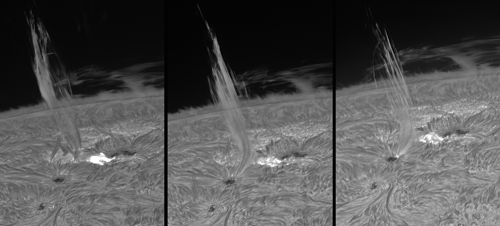
7. Observation of the chromosphere
7.1 Introduction
7.2 Chromospheric layers visible in Ha and Ca II
7.3 The observation of the chromosphere in Ca II
7.3.1 The Ca II K and H lines
7.3.2 What do we see with a Ca II filter?
7.3.3 Instruments and filters for Ca II observation
7.4 Observation of the chromosphere in Ha
7.4.1 What do we see with a Ha filter?
7.4.2 Instruments and filters for Ha observation
7.4.3 The Fabry-Perot etalon and its use
7.4.4 And the Lyot filter?
7.4.5 The energy rejection filter (ERF)
7.4.6 Blocking filter (BF)
7.4.7 The Induced Transmission Filter (ITF)
7.4.8 Some practical tips
7.5 Appendix 1: Fabry-Perot formulas
7.5.1 Basic formulas
7.5.2 Etalon mounting in a converging beam
7.6 Appendix 2: measurement of the transmission profile of the elements of a Coronado Ha filter
7.7 Appendix 3: the He line
7.8 Appendix 4: height of the layers sampled in Ca K in areas of quiet Sun and in plages
7.9 Appendix 5: influence of the filter CWL on Ca H images
7.10 Appendix 6: influence of the filter CWL on Ha images
7.11 Appendix 7: testing etalon quality
7.11.1 Test in diffuse light and a Ha lamp
7.11.2 Test in collimated beam and a Ha lamp
7.11.3 Test in telecentric beam using Sun as a light source
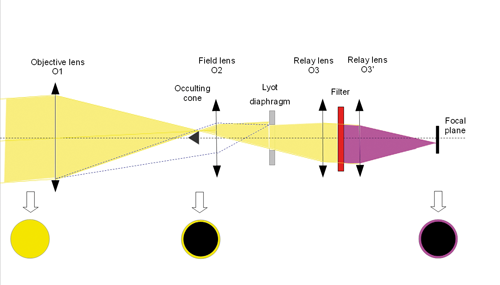
8. The coronagraph
8.1 History of the coronagraph
8.2 Principle of operation
8.2.1 Two types of coronagraph
8.2.2 Principle of coronagraph operation
8.2.3 Observation of the solar corona
8.3. The coronagraph in detail
8.3.1 The occulting cone
8.3.2 The Ha filter
8.3.3 Manufacturers
8.3.4 Using a coronagraph
8.4 Construction of a coronagraph
8.5 Appendix 1: diffraction, Lyot diaphragm and apodization
8.5.1 Diffraction of light by the objective
8.5.2 Lyot diaphragm and apodization
8.6 Appendix 2: position of the optical elements of the coronagraph
8.7 Appendix 3: observation of prominences in bands other than Ha
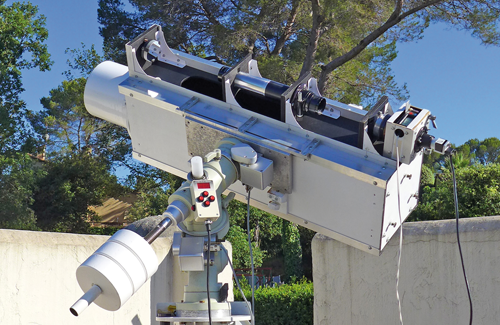
9. Amateur solar instruments
9.1 Introduction
9.2 Norma Desprez’s solar Maksutov
9.3 François Rouvière’s 210 mm solar telescope
9.4 Christian Viladrich’s 300 mm solar telescope
9.4.1 Objectives and specifications
9.4.2 Choosing the optical design
9.4.3 Primary mirror coated or not?
9.4.4 Choice of material for the primary mirror
9.4.5 Rear face of the primary mirror polished or frosted?
9.4.6 Thermal aspects and minimization of internal turbulence
9.4.7 Stray light
9.4.8 Secondary mirror and spider
9.4.9 Focus assembly
9.4.10 Collimation
9.4.11 What’s the balance sheet after four years of use?
9.5 François Rouvière’s folded 175 mm aspherical lens refractor
9.6 Jean-Pierre Brahic’s 230 mm solar refractor
9.6.1 The project
9.6.2 What do we see through a 230 mm solar telescope?
9.6.3 Assessment after six years of use
9.6.4 The cost of a dream? 29
9.6.5 The future?
9.7 Philippe Tosi’s 225 mm coronagraph
9.7.1 Optics
9.7.2 Coronagraph tube
9.7.3 Occulting cone
9.7.4 Equatorial mount
9.7.5 Results obtained
9.8 Jean-Jacques Poupeau’s spectroheliograph
9.8.1 Introduction
9.8.2 Principle of the instrument
9.8.3 Optical layout
9.8.4 Construction
9.8.5 Synthesis of the image using a video camera
9.8.6 Processing spectral images to spectroheliograms
9.8.7 Results achieved
9.8.8 Conclusions
9.9 Harald Paleske’s 225 mm Unigraph refractor
9.9.1 The first development
9.9.2 A 225/2600 mm FH Unigraph for Ha solar observation
9.9.3 Conclusion
9.10 Bob Yoesle’s 140 mm double-stack Ha refractor
9.10.1 The beginning of a passion
9.10.2 First step in Ha…
9.10.3 Solar nirvana?
9.10.4 The quest goes on
9.10.5 The SM140/SM90 refractor
9.10.6 Rebuilding the SM140/SM90 refractor
9.10.7 First light with the rebuilt SM140/90 refractor
9.10.7 Back to work again
9.10.8 Success at last
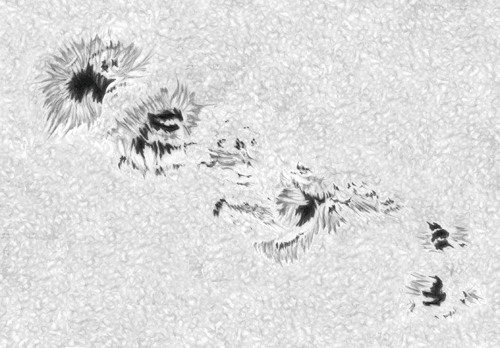
10. Drawing, a school of observation
10.1 Sketching as a school of observation
10.1.1 The purpose of sketching
10.1.2 Drawing material
10.1.3 Which instrument to use?
10.1.4 Eyepiece and filter choice
10.1.5 One method among many
10.1.6 And now in Ha?
10.1.7 To go further
10.2 The art of drawing
10.2.1 Drawing the solar photosphere in white light
10.2.2 Drawing the Sun in Ha wavelength
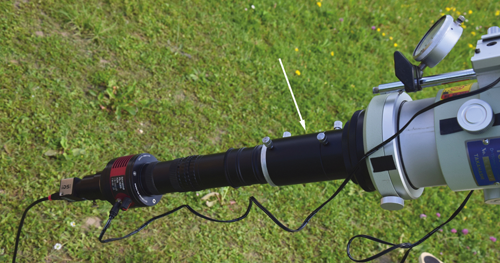
11. Image acquisition
11.1 Introduction
11.2 Daytime polar alignment
11.2.1 For visual observation
11.2.2 For imaging
11.3 Focal length, image field and sampling
11.3.1 Focal length, sensor size and angular field of view
11.3.2 Sampling
11.3.3 Optimal sampling for high resolution
11.3.4 How to adjust the sampling value: Barlow or eyepiece?
11.3.5 How to measure the sampling and the effective focal length of the instrument?
11.4 Focusing
11.4.1 What focus tolerance?
11.4.2 Focusing techniques
11.5 Solar autoguiding
11.5.1 Autoguiding with acquisition software
11.5.2 Autoguiding with guide telescope
11.6 Digital sensors
11.6.1 Main features
11.6.2 Some useful technical concepts
11.6.3 All things considered: which camera is best for solar imaging?
11.7 Video cameras and their settings
11.7.1 Windowing
11.7.2 Number of acquisition bits
11.7.3 Setting the gain
11.7.4 Setting the offset (or black level)
11.7.5 Setting the exposure time
11.7.6 Capture rate
11.7.7 Adjusting the gamma
11.8 Acquisition with video cameras
11.8.1 Format of the acquisition file
11.8.2 Duration of the acquisition
11.8.3 Animations
11.8.4 CMOS Fixed Pattern Noise Correction
11.8.5 Making flat field images (“flats”)
11.8.6 Cleaning the sensor
11.8.7 What to do in case of glare?
11.8.8 Limit camera warm-up
11.8.9 Mechanical mounting of the camera
11.9 DSLRs and their settings
11.9.1 Introduction
11.9.2 Full-disk solar images
11.9.3 Close-up images of solar details
11.9.4 Using DSLR in video mode
11.9.5 Control of the DSLR by a PC
11.9.6 Using an external LCD screen with HDMI connection
11.10 Appendix
11.10.1 Conversion between dB and number of bits
11.10.2 Measuring the dynamic range and SNR of a camera
11.10.3 Approximate measurement of the focal length of a Barlow lens
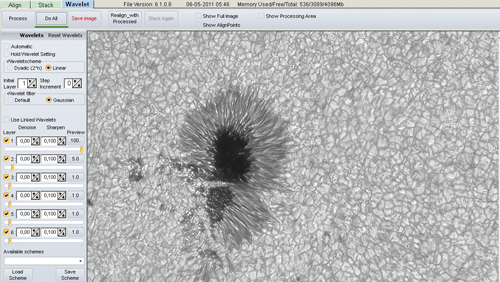
12. Image processing
12.1 The basic treatment: registering/sorting/stacking
12.1.1 The basic principles
12.2 AutoStakkert! v3
12.2.1 A quick guide
12.2.2 The most important settings in more detail
12.2.3 AutoStakkert!: Additional parameters
12.3 The enhancement of micro-contrast
12.3.1 Correction of reflections
12.3.2 The different scale levels of detail in an image
12.3.3 Unsharp mask processing
12.3.4 Wavelet processing
12.3.5 Richardson – Lucy deconvolution treatment
12.3.6 Artifacts or real details, what is the limit to treatment?
12.4 Differentiated local treatments
12.4.1 Highlighting details in sunspot umbrae
12.4.2 Harmonization between solar disk and prominences
12.4.3 “Coronagraph” effect
12.5 Finalization of images (gamma, visualization thresholds, colorization)
12.5.1 Gamma and visualization thresholds
12.6 Mosaics
12.7 Animations
12.7.1 Creating an animation with ImPPG and Photoshop
12.7.2 Animation of prominences
12.8 Some additional interesting software and utilities
12.8.1 SER Player
12.8.2 PIPP
12.8.3 ImPPG
12.8.4 RegiStax 6
12.8.5 Astrosurface
12.9 Appendix: introduction to color management 367
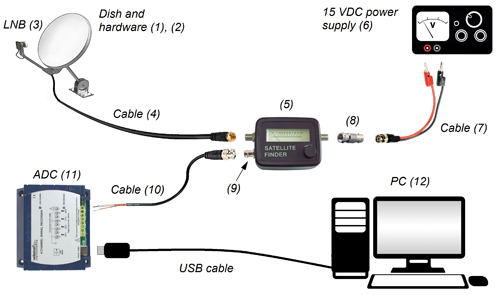
13. Amateur solar radio astronomy
13.1. Introduction
13.2. What is radio astronomy?
13.2.1 The electromagnetic spectrum
13.2.2 The radio telescope
13.2.3 The dipole antenna
13.2.4 The parabolic antenna
13.2.5 The power received by a radio telescope
13.2.6 Antenna arrays
13.3. Solar activity at radio wavelengths
13.3.1 Radio emission mechanisms
13.3.2 Emission from the disturbed or active Sun
13.4. Lucie: a solar radio telescope for the beginning radio astronomer
13.4.1 The different elements of the Lucie radio telescope
13.4.2 Constructing the Lucie Radio Telescope
13.4.3 A solar radiometry measurement
13.4.4 Some final words about the Lucie radio telescope
13.5. Solar radio observation at other wavelengths
13.6. Concluding thoughts
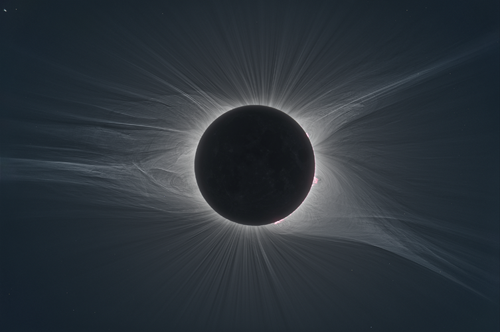
14. Solar eclipses
14.1. What is a solar eclipse?
14.1.1 Earth-Moon-Sun system
14.1.2 The saros
14.1.3 Different types of solar eclipses: partial, annular, hybrid, total
14.1.4 Points of contact during an eclipse
14.2. Partial eclipse
14.2.1 Visual observation
14.2.2 Photographing the eclipse
14.3. Annular eclipse
14.3.1 Visual observation
14.3.2 Photographing the eclipse
14.4. Hybrid eclipse
14.5. Total eclipse
14.5.1 Speed of the Moon’s shadow
14.5.2 What is the duration of totality?
14.5.3 Visual observation
14.5.4 Photographing the eclipse
14.5.5 Making a video of the eclipse
14.5.6 Visual observation of the eclipse with an instrument
14.5.7 Additional tips
14.6. Observing the eclipse from an airplane or a ship
14.7. Next solar eclipses
14.8. The solar corona: shape, structure and brightness
14.9. A closer look at totality
14.9.1 Observation of stars and earthshine
14.9.2 High resolution observation of the corona
14.9.3 Possible scientific experiments
14.10. Processing the images of totality
14.10.1 Processing with Photoshop
14.10.2 Other processing methods
14.10.2.1 Registration of images on the solar disk
14.10.2.2 Correction of the radial brightness gradient
14.11 Appendix: acquisition control software
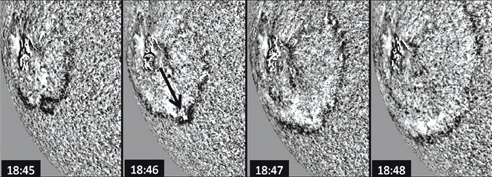
15. Amateur observing programs
15.1 Introduction
15.2 Orientation of the Sun on images or drawings
15.2.1 Solar orientation in a telescope
15.2.2 Frame orientation with respect to the celestial coordinate system
15.2.3 Heliographic coordinates
15.2.4 Solar grid tools
15.2.5 Grids and various measurement tools
15.2.6 Useful links
15.3 Counting sunspots: Wolf number
15.3.1 The program
15.3.2 Useful links
15.4 Recording sunspot positions
15.4.1 The program
15.4.2 Useful links
15.5 Observation of prominences and other Ha features
15.5.1 The program
15.5.2 Useful links
15.6 Detection of Moreton-Ramsey waves
15.6.1 The program
15.6.2 Useful links
15.7 SOHO/LASCO and STEREO/SECCHI comet detection
15.7.1 The program
15.7.2 Useful link
15.8 Solar stormwatch
15.8.1 The program
15.8.2 Useful link
15.9 Measuring the variation of ovalization of the chromosphere
15.9.1 The program
15.9.2 Useful links
15.10 F-Chroma program
15.10.1 The program
15.10.2 Useful link
15.11 An example of ProAm cooperation: the Associate Observers of Pic du Midi
15.11.1 Introduction
15.11.2 Birth of the team
15.11.3 Birth of the association
15.11.4 Equipment in operation
15.11.5 Results achieved to date
15.11.6 Useful links
15.12 Solar studies with an amateur spectroheliograph
15.12.1 Introduction
15.12.2 A measurement of the solar differential rotation
15.12.3 The Dopplergram
15.12.4 Spectroscopic study of a rapidly moving solar feature
15.12.5 Temperature measurement of a filament
15.12.6 The magnetic field of a sunspot
15.12.7 Concluding thoughts
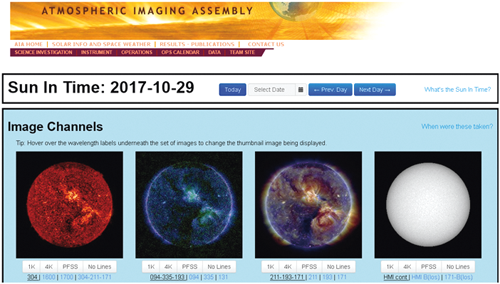
16. The Sun on the Internet
16.1 Introduction
16.2 Solar ephemerides
16.3 Solar eclipses
16.4 Monitoring the activity of the photosphere
16.5 Monitoring the activity of the chromosphere
16.5.1 Ground based solar observatories
16.5.2 Satellite based solar observatories
16.6 Composite websites
16.7 Websites collecting amateur observations
16.8 Forums specialized in solar observation
